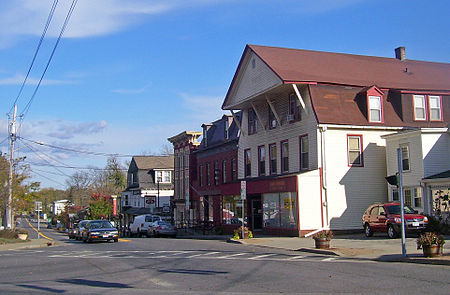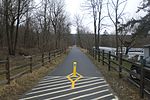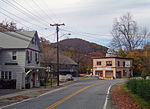Amenia (CDP), New York
Amenia, New YorkCensus-designated places in Dutchess County, New YorkCensus-designated places in New York (state)Hamlets in Dutchess County, New YorkHamlets in New York (state) ... and 2 more
Poughkeepsie–Newburgh–Middletown metropolitan areaUse mdy dates from July 2023

Amenia is a hamlet and census-designated place (CDP) in Dutchess County, New York, United States. The population was 725 at the 2020 census. It is part of the Poughkeepsie–Newburgh–Middletown, NY Metropolitan Statistical Area as well as the larger New York–Newark–Bridgeport, NY-NJ-CT-PA Combined Statistical Area. The hamlet of Amenia is in the town of Amenia on U.S. Route 44 at the junction of Routes 22 and 343.
Excerpt from the Wikipedia article Amenia (CDP), New York (License: CC BY-SA 3.0, Authors, Images).Amenia (CDP), New York
Church Street,
Geographical coordinates (GPS) Address Nearby Places Show on map
Geographical coordinates (GPS)
| Latitude | Longitude |
|---|---|
| N 41.846944444444 ° | E -73.554722222222 ° |
Address
Church Street
Church Street
12501
New York, United States
Open on Google Maps







